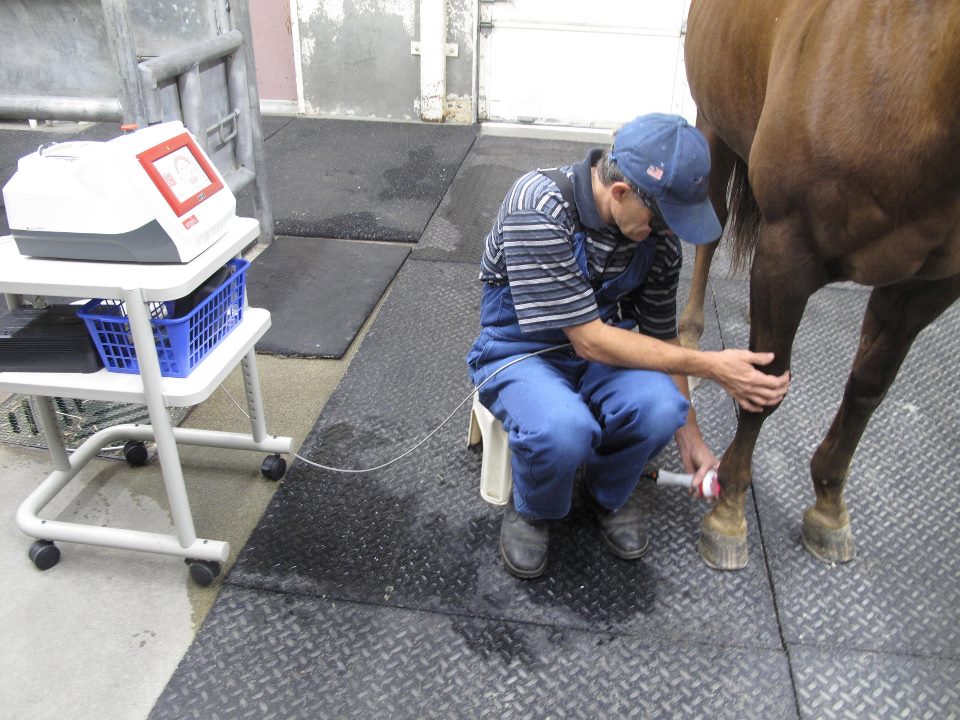Equine Therapy Programs: Changing Lives One Adventure at once
Wiki Article
Discovering the Perks of Laser Therapy in Equine Therapy for Improved Recuperation
The arrival of laser therapy in equine treatment provides an encouraging method for enhancing healing and general wellness. Specifically reliable for soft cells injuries, laser treatment additionally plays a significant role in handling chronic discomfort and enhancing blood flow. Its capability to enhance collagen manufacturing better adds to cells integrity.How Laser Therapy Works
Laser therapy, an advanced method in equine therapy, runs by sending out specific wavelengths of light to permeate cells and boost mobile procedures. This innovative technology harnesses the power of photons to interact with chromophores within the cells, setting off photochemical reactions that improve cellular metabolic rate. The key system entails the absorption of light by mitochondrial chromophores, resulting in boosted production of adenosine triphosphate (ATP), the cell's power money.The altitude in ATP levels accelerates numerous organic procedures, consisting of enhanced protein synthesis and cell spreading. In addition, laser therapy regulates inflammatory actions by reducing pro-inflammatory cytokines and raising anti-inflammatory cytokines. This twin activity helps in reducing discomfort and advertising cells fixing.

Benefits for Soft Tissue Injuries
When addressing soft tissue injuries in equines, laser treatment supplies a multitude of advantages that substantially improve recuperation results. Soft cells injuries, including tendons, ligaments, and muscle mass, are common in equine professional athletes and usually need comprehensive healing durations. Laser therapy, or photobiomodulation, promotes mobile regeneration and maximizes tissue repair work by stimulating mitochondrial task, therefore increasing the all-natural healing process.Among the main advantages of laser therapy is its capacity to decrease inflammation. By targeting the affected area with specific wavelengths, laser therapy minimizes the inflammatory response, reducing swelling and linked pain. This anti-inflammatory result is critical in handling the initial phases of injury, where too much swelling can hinder recovery.

Moreover, laser therapy promotes the manufacturing of collagen, a vital protein for keeping the stability and elasticity of soft tissues. Boosted collagen synthesis speeds up the repair work of broken structures, decreasing the danger of reinjury. Laser therapy supplies a non-invasive, drug-free service for accelerating the rehabilitation of soft tissue injuries in horses.
Taking Care Of Persistent Pain
In the world of equine medical care, handling persistent pain offers a significant difficulty, typically calling for multifaceted strategies for effective treatment. Chronic discomfort in steeds can stem from a range of resources, consisting of arthritis, laminitis, and various other degenerative problems. Typical administration techniques, such as anti-inflammatory medicines and physical therapy, have their merits however can be limited by adverse effects and inconsistent effectiveness.Laser therapy has actually arised as a promising adjunctive treatment for taking care of chronic discomfort in equines. This non-invasive technique makes use of certain wavelengths of light to penetrate cells, advertising mobile repair and lowering inflammation. By improving here microcirculation and promoting the release of endorphins, laser therapy can give considerable pain relief without the adverse effects typically connected with pharmaceuticals.
Veterinarians have actually reported significant renovations in flexibility and convenience in steeds going through laser treatment for persistent problems. This healing choice is specifically advantageous for horses that are intolerant or less competent to conventional treatments (Equine Therapy). Moreover, the capability to target details discomfort sites exactly makes laser therapy a flexible tool in the detailed discomfort administration toolbox. As research study remains to progress, the integration of laser therapy in equine chronic pain management holds substantial possibility for improving the quality of life for affected steeds.
Enhancing Recuperation Times
Building on the appealing outcomes observed in pain monitoring, laser therapy additionally shows significant potential in enhancing recuperation times for equine patients. This technique works by accelerating mobile regrowth and enhancing blood flow, which are essential consider the healing procedure. The application of laser treatment stimulates the production of adenosine triphosphate (ATP), consequently raising the energy available for cellular fixing and lowering inflammation.Medical research studies have actually shown that steeds treated with laser treatment show quicker recovery from musculoskeletal injuries, procedures, and soft tissue damage. The reduction in inflammation and pain not only aids in faster tissue repair work yet additionally permits for earlier and extra effective rehabilitation exercises. This is particularly helpful for efficiency steeds, where decreasing downtime is crucial for maintaining competitive schedules.
Furthermore, laser therapy can be precisely targeted to specific injury sites, making certain that the healing results are local and powerful. This precision decreases the possibility of read more negative effects and advertises extra regular recuperation outcomes. As a result, equine vets are increasingly integrating laser therapy right into their therapy methods, identifying its efficiency in speeding up recovery times and enhancing the general healing procedure for equine clients.
Improving General Well-being
As laser therapy remains to get traction in equine medicine, its benefits prolong past just injury recuperation, substantially adding to the general wellness of equines (Equine Therapy). This therapeutic method has shown efficacy in reducing persistent pain, lowering inflammation, and advertising cellular regrowth. Such outcomes are not only crucial for recovery yet likewise boost the quality of life for equine people, ensuring they stay energetic and materialAmong the key elements in which laser treatment help in boosting overall wellness is via its analgesic effects. Pain monitoring is important for steeds, especially those associated with affordable sports or extensive tasks. By mitigating discomfort, laser treatment enables these animals to do optimally and minimizes the risk of countervailing injuries.

Conclusion
In recap, laser treatment presents a substantial development in equine treatment by boosting cellular regrowth, decreasing swelling, and accelerating recovery processes. Laser treatment arises as navigate to these guys an indispensable device for enhancing recovery and improving the total well-being of equines.Report this wiki page